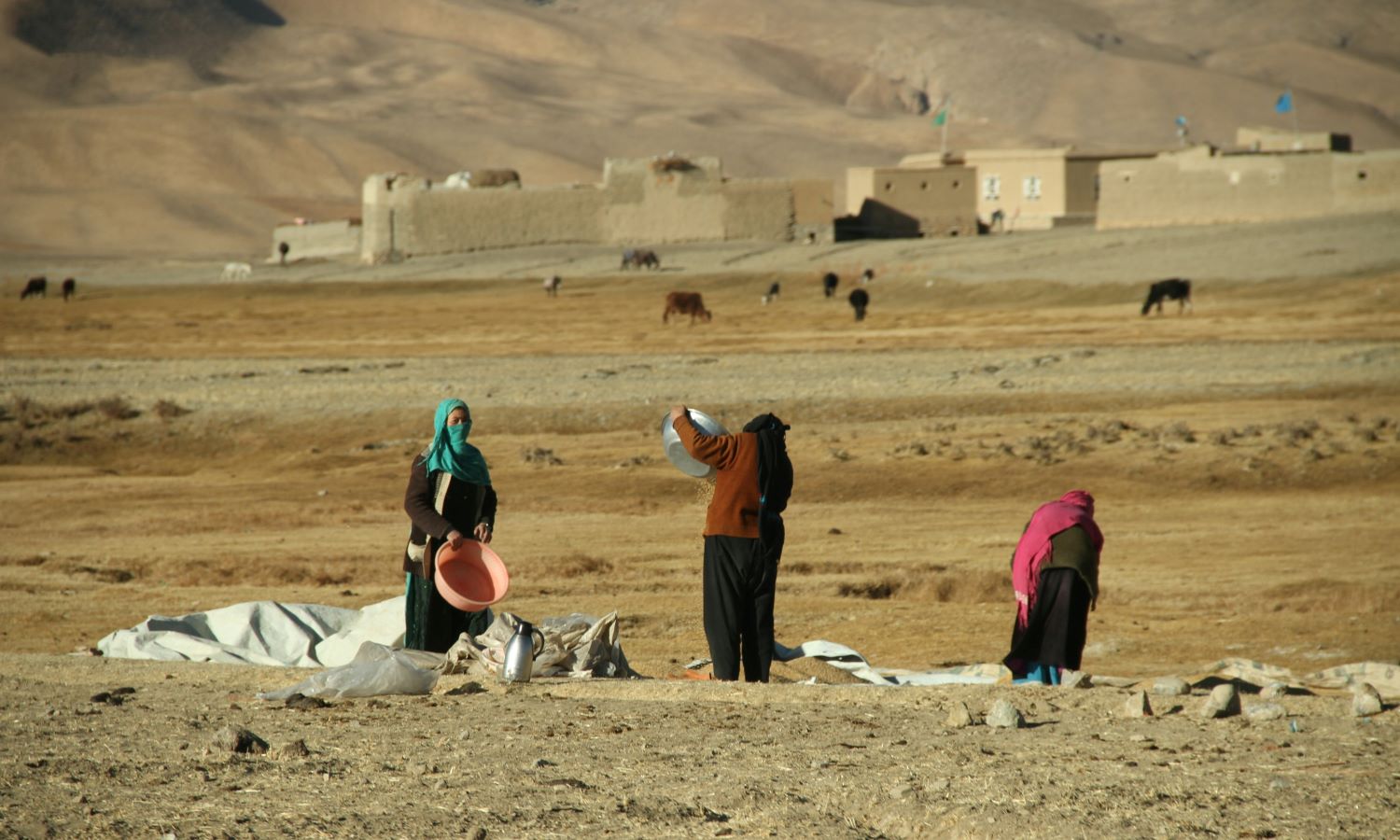Following the Taliban’s takeover in Afghanistan, farmers are facing a humanitarian crisis as thousands flee conflict and financial and social systems fail.
In the summer 2021, the Taliban took control of all major cities in Afghanistan. As a result, the United Nations Secretary General António Guterres reports that Afghans are facing soaring poverty rates and the collapse of public services, and thousands are being internally displaced. An estimated 14 million Afghans are suffering from acute food insecurity, and the United Nations Children’s Fund (UNICEF) estimates that 1 million children could die from food insecurity and malnutrition if they do not receive humanitarian aid.
Farmers are also facing increasing challenges due to the recent turmoil, Dr. Abdul Qader Fakhri, Deputy and Program Director at the Dutch Committee for Afghanistan (DCA), tells Food Tank. In partnership with the International Fund for Agricultural Development, the DCA implements the Community Livestock and Agriculture Project in Afghanistan. The project promotes community, livestock, and agriculture development as well as support for young professionals. “With the Taliban taking over,” Fakhri says, “farmers are impacted by different elements,” including disrupted banking systems, halted exports, threatened women’s rights, and displaced people.
The World Bank reports that agriculture accounts for one quarter of Afghanistan’s gross domestic product (GDP) and roughly 60 percent of households derive at least a portion of their income from agriculture. But since the Taliban’s takeover, the World Food Programme estimates that around 40 percent of agricultural crops have been lost and wheat prices increased by 25 percent. The significant crop losses coupled with increasing food prices are likely to increase unemployment and poverty among farmers who no longer make a profit, and instead, depend on their savings.
Dr. Raymond Briscoe, Executive Director of DCA tells Food Tank that he is particularly concerned for livestock farmers in the region. He explains that 75 percent of rural populations depend on livestock for their livelihoods. Dr. Chalachew Agonafir, Livelihoods and Resilience Specialist at DCA, adds that around 45 percent of land in Afghanistan is used for grazing.
But the Taliban’s takeover led to the abrupt halt of foreign aid from international organizations and countries alike. “As a result of the recent takeover, the majority of funding is frozen, leading to the closure of the banks and financial activities,” Agonafir tells Food Tank. Without cash flow, livestock farmers cannot maintain their farms, afford to feed their families and their animals, or implement climate change mitigation measures in drought-prone regions.
Briscoe also explains that it is difficult to convince government agencies of the importance of livestock. “Most of the funding that comes in is to fund agriculture and irrigation projects, but very little comes for livestock,” he tells Food Tank.
The recent political challenges are also putting women’s ability to work at risk, posing further challenges to livestock farming. According to the World Bank, women account for 65 percent of employment in agriculture. “Women are a very important part of livestock production,” Fakhri tells Food Tank. “They are responsible for harvesting alfalfa, feeding, milking, and taking care of sick animals.” Depriving women of their right to work results in a loss of income, which affects their, and their families’, access to food, water, and protection.
Even when women continue to work, they are vulnerable to gender based violence, according to Refugees International. But Fakhri and the DCA remain hopeful that the Taliban will implement official policies to allow women to work in agriculture following the Taliban’s promise to uphold women’s rights.
The Taliban’s rule is also compounding pre-existing challenges caused by ongoing political instability and climate change. “Even before the Taliban takeover we had challenges; we have had continuous droughts for decades,” Fakhri tells Food Tank. He continues, “Livestock is very much affected by drought, when there is no rain, there is no pasture. In many provinces we have had less than 200 millimeters of rainfall this year. For a country that is mostly dependent on rain-fed pastures, this is a disaster.”
Shorter rainy seasons, as a result of the climate crisis, have led to a chronically drought-impacted country. According to the International Federation of Red Cross, 3 million livestock are at risk of perishing in 2021 from a lack of food and water.
Water-related infrastructure could help address this problem. But Oli Brown, Climate Security Expert Network at Adelphi, tells Food Tank that ongoing conflict since the 1970s has impeded these developments.
Conflict and drought are also driving displacement, Fakhri tells Food Tank. Since the 1970s, a total of one in four, or 6 million, Afghans have been displaced. Following the rise of the Taliban, an additional 700,000 people have been displaced, significantly affecting agriculture and livestock.
“If a family is displaced, they will have to stop agricultural activities,” Fakhri tells Food Tank. “And many will take their animals along their journey, but they will lose them. Very rarely have displaced people been able to keep some animals.”
Without livestock and a stable home, a growing number of families are losing their source of income and risk food insecurity and malnutrition. “This is a whole vulnerability cycle that we have been experiencing for the past 40 years,” Fakhri tells Food Tank. “All these problems are related to each other.”
Photo courtesy of Farid Ershad, Unsplash











